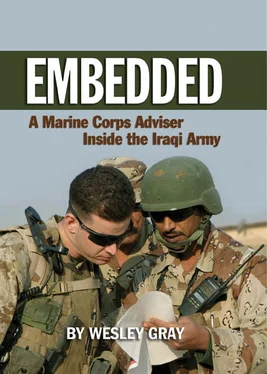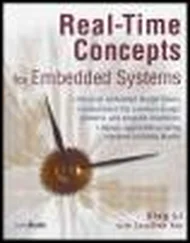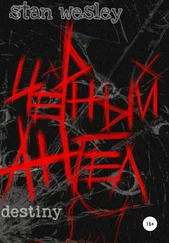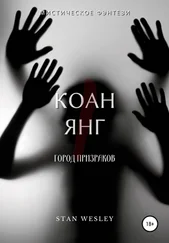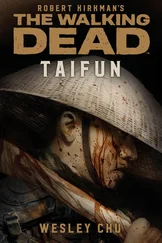Everyone on the MiTT thought the PLB was a perfect example of the waste, fraud, and abuse in Iraq that stabs the pocketbook of the American taxpayer, and a sign that whoever was purchasing gear for the military hadn’t spent much time in the field carrying these items on their back. The PLB is a device about the size of a large baked potato that all embedded advisers are required to wear at all times. It is bad enough we were required to wear additional gear (I guess eighty-plus pounds was not enough); however, the PLB was especially rotten because it was a neon yellow color that blended in perfectly with a banana tree.
To make matters even worse, the concept behind the device is a joke. Apparently, when taken prisoner by the insurgents, we were somehow supposed to take this potato-sized, neon yellow device from its pouch, set it right side up (in any other position it does not receive a signal), extend the antennae skyward, and press two buttons simultaneously for five seconds. Great. I was sure the insurgents would give me a timeout to get my PLB up and running.
Following our PLB class a U.S. Army officer gave us an intelligence and operations update on the team we were replacing in Haditha. The news was not good. The day before the team had hit a pressure-plate IED, which totaled a Humvee, killed two Iraqis, and seriously wounded two others. Moreover, overall attacks in the Triad area had spiked from fifteen events the week before to almost forty. It was amazing how hanging out on the enormous, stalwart U.S. Army bases could give a person the perception that things were not that bad in Iraq. The reality was that we expected to run into a buzz saw when we arrived in Haditha.
I started training with the Joint IED Defeat Task Force (JIEDD TF). The JIEDD TF is the Department of Defense’s well-funded ($1.23 billion for the 2005–6 funding cycle) solution to solving how they can keep a bunch of fifth-grade-level-educated, twenty-something Arabs from making hamburger meat out of service members. Thus far, their success had been poor. There had been an enormous increase in IED attacks and IED lethality over the past couple of years. I hoped the JIEDD TF was like fine wine and would get better with time.
Our class was taught by two former U.S. Army Special Forces Delta operators who spoke to us about winning the fight against IEDs and the various enemy techniques, tactics, and procedures (TTPs) that we may face in Al Anbar Province. The class was lame, as we had been through numerous similar courses in predeployment training. What I did find interesting was that this was my first chance to witness some men who were in the fabled Delta Force.
Delta Force operators are supposed to be the baddest of the bad, the guys who kill you with their stare and have lighting bolts fly from their asses at their discretion. I cannot remember the names of the instructors, but I am going to guess they were Max and Stone Cold. The main speaker, Max, talked about how he had not killed many people face to face but had killed hundreds of people with the radio (either with indirect fire, air support, or calling in a quick reaction force). He suggested we follow suit and ensure our communication procedures are tight. Max summarized his advice: “The radio helps you figure out who is coming to help out if you are stuck in an ambush, who is calling for fire, who is calling in the MEDEVAC [medical evacuation], who is calling EOD [Explosive Ordnance Disposal] teams, and so forth. Without proper radio procedures, you are fish bait for the insurgents.”
As a follow-on to the JIED TF classes we were given a brief on a brand-new piece of gear the Marines were fielding in Al Anbar called the Chameleon. By the time we hit the deck in the Triad we were supposed to have Chameleons on all of our Humvees. We had heard rumors of the device before the deployment, and the word on the street was that it came straight from the hands of God. It is an electronic countermeasure (ECM) device that sets the gold standard for stopping radio-controlled IED attacks. The specifics are classified, however. The U.S. Navy lieutenant junior grade teaching the class confided to everyone, “I can’t get into the details, but I can tell you that the Chameleon will block any radio-controlled device the insurgents currently have and anything they will have in the foreseeable future.”
Hearing the lieutenant junior grade’s news was outstanding. I was glad we would have large force fields around our Humvees, blocking all the IEDs in Al Anbar Province. There had to be a catch, right? Well, the catch was that the Chameleon blocks all radio-controlled IEDs—the IEDs triggered by cell phones, garage door openers, wireless telephones, and so forth. Sadly, the Wile E. Coyote method of connecting a group of explosives to a long copper wire with a trigger device attached to the end worked like a charm.
I came away with four pieces of advice from the IED classes. First, if you do not hear the IED, do not worry about it because you will be heading to heaven soon. Second, if you do hear the IED, praise God, because you are alive and still have a chance to kill the bastard who tried to blow you up. Third, if you see wires on the side of the road, odd shapes in the form of an artillery shell, people loitering around batteries, or other suspicious happenings, get as far away from the site as possible. Finally, before you go on a Sunday drive in Al Anbar Province, turn on your Chameleon. Pretty simple stuff, really.
After IED lectures I engaged in my second important endeavor of the day, which was to sit through a brief by Gen. George Casey, the commander of all forces in Iraq. I was humbled as I sat through the presentation. Despite his diminutive stature (five feet six inches tall) and placid temperament, it was exhilarating to hear the powerful words come out of his mouth. General Casey was an impressive man. All the same, one thing disturbed me as I listened to him during the question and answer session. A soldier asked, “General, are the Iraqis in a civil war?” Casey replied, “No.” He paused, letting his words sink in, and continued. “We are moving away from an insurgency fight against coalition forces in Iraq to an internal sectarian fight in Iraq where the Sunnis are fighting for control over what they believe to be a Shia-led government.” The small crowd of fifty advisers laughed at the response. It was obvious the general did not want to be tagged as being the one who said Iraq was in a civil war.
Sensing the crowd’s distaste with the general’s response, Major General Everson, General Casey’s deputy, commented, “Gents, seriously, if a civil war was upon us, would we ever be able to call a spade a spade without getting in trouble with our bosses?” The crowd chuckled as Casey gave Everson a disapproving look.
At the end of the question and answer session, I was vexed by what General Casey had said. He was so political in his response that he seemed disingenuous. We were not CNN or the New York Times ; we were his troops and looking for honesty and straight answers, not some crap we would expect from a politician.
I am not sure why the “civil war” term is such an issue. According to the Merriam-Webster Dictionary , a civil war is “a war between opposing groups of citizens of the same country.” What I saw in Iraq were Sunnis and Shias, citizens of the same country, who were violently fighting each other for political control of Iraq. To me it seemed cut and dried that a civil war was happening in Iraq. I wished someone would call it that and not beat around the bush.
The next day I showed up twenty minutes early to class. This was not my MO because twenty minutes wasting away in the classroom was twenty minutes I could be learning Arabic, doing PT, or sleeping; however, I was glad I showed up early since I had a unique opportunity to talk with a U.S. Army reservist lieutenant colonel who would be leading an adviser team north of Baghdad.
Читать дальше
